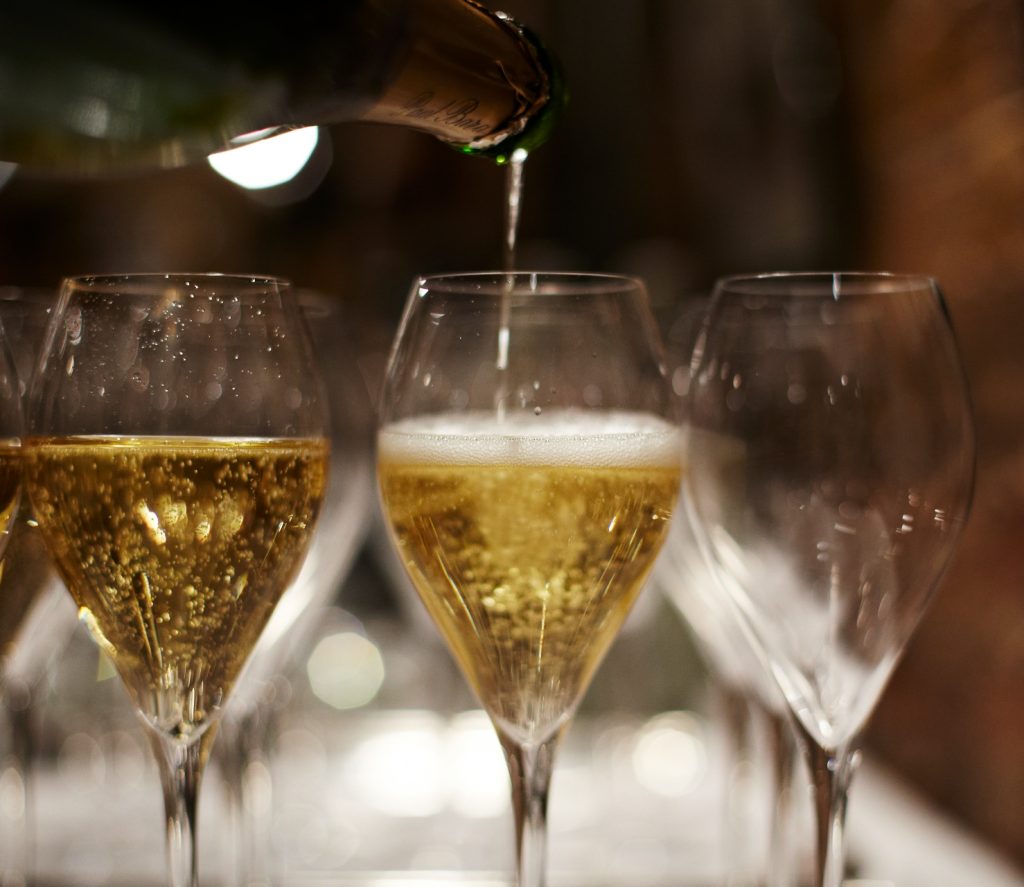Non-vintage Champagne: a new style?
Author: Barbara Drew MW

Almost every wine, regardless of region or brand name, has a year on the label – the vintage.
This is the year the grapes were grown, and those four numbers contain a multitude of information: whether the spring was cold, with frost, leading to a small harvest; whether the summer had heat spikes, resulting in lower acidity than usual in the wine; or whether the autumn was fine and dry, resulting in ripe, soft tannins. The year has a huge impact on the style and quality of a wine, and its potential for ageing.
But occasionally, there is no year on the label. Such wines are non-vintage (or more accurately, multi-vintage). A non-vintage wine is one that does not come from a specific year, but is the result of wines from several years being blended together. In the wine world these are remarkably rare, confined to wines such as Sherry, blended through the years and across barrels to add huge depth and complexity to the wine.
But whilst globally rare, regionally they hold great sway in the key sparkling wine producing regions of the world, in particular Champagne. Non-vintage (or NV) Champagnes are the engine room of Champagne production, accounting for approximately 90% of the region’s annual output.
To understand why, you need to look both at the climate in the Champagne region, as well as the industry here. Traditionally the climate here has been unpredictable. The region suffers from cold winters, which can extend long into spring, resulting in frost at budbreak and rain or wind at flowering, both of which can result in smaller volumes of fruit. Summers can be warm and bright, but just as often grey and rainy. Unlike most still wine-producing regions where grapes can be left on the vine to develop flavour and sugar into the autumn, in Champagne they must be picked early, so the base wine remains low in alcohol (around 10-10.5%). This weather variability means that some years the wine produced is quite different in character to others – with more noticeable acidity, less alcohol and less ripe fruit flavours.
Traditionally this large variability in style was undesirable, particularly for the large brands that once dominated the region. Those producers creating millions of bottles of wine needed both volume and consistency, year in, year out, and blending the tool to achieve this aim. In addition, blending across vintages was a great way to improve the overall quality of wine produced. By adding in wines from years that are excellent, which might otherwise be bottled as standalone vintage wines, it adds complexity and quality to the non-vintage wines. Such wines can even be aged for a few years, to develop even greater complexity. However, non-vintage wines are particularly problematic in the cellar; without an excellent management system (our app, perhaps) you’re never entirely sure when a wine was originally laid down, and therefore when it should be drunk.
However, a new trend is emerging in Champagne. Whilst the weather is as variable as ever, it is certainly warmer, and the years when grapes simply weren’t ripe enough to produce good wine are rare indeed. Some argue that the grapes are now of sufficient quality to produce a vintage wine every year, and that is what a handful of producers do. Others argue that multi-vintage blending is an asset, adding complexity and depth to a wine, and wish to continue. But they also recognise that consumers want to know more about what’s in their bottle; what year the wine has come from; what the characteristics might be; and how long it might age for.
As a result, Champagne Houses are increasingly releasing ‘expressions’ of non-vintage wines. Producers such as Krug and Jacquesson led the way, numbering each non-vintage release so that consumers, if they wished, could see what the majority vintage in the wine is, understand the character, and keep track of its ageing if they left it in their cellar. Other producers, seeing the benefit, are following suit. Louis Roederer have recently shifted their approach to their non-vintage wine, instead moving to a series of numbers “collection” wines. The number refers to the youngest vintage in the blend – Collection 243 being made up of 2018, Roederer’s 243rd vintage – supported by oak-aged reserve wines. And, to add further complexity, Roederer add in wines from a Perpetual Reserve; a tank filled with older wines that is continuously topped up with younger vintages as the wine within is used.
The wines themselves still show house style first and foremost. And they lack the distinct variations in flavour and structure of true vintage wines. But for those in the know, it is a little easier to detect subtle changes between the years. And for these modern non-vintage wines, the problem of heading into your cellar and trying to work out which non-vintage Champagne to drink first, has now, happily, been eliminated.
Read more articles about Champagne and sparkling wine here.


